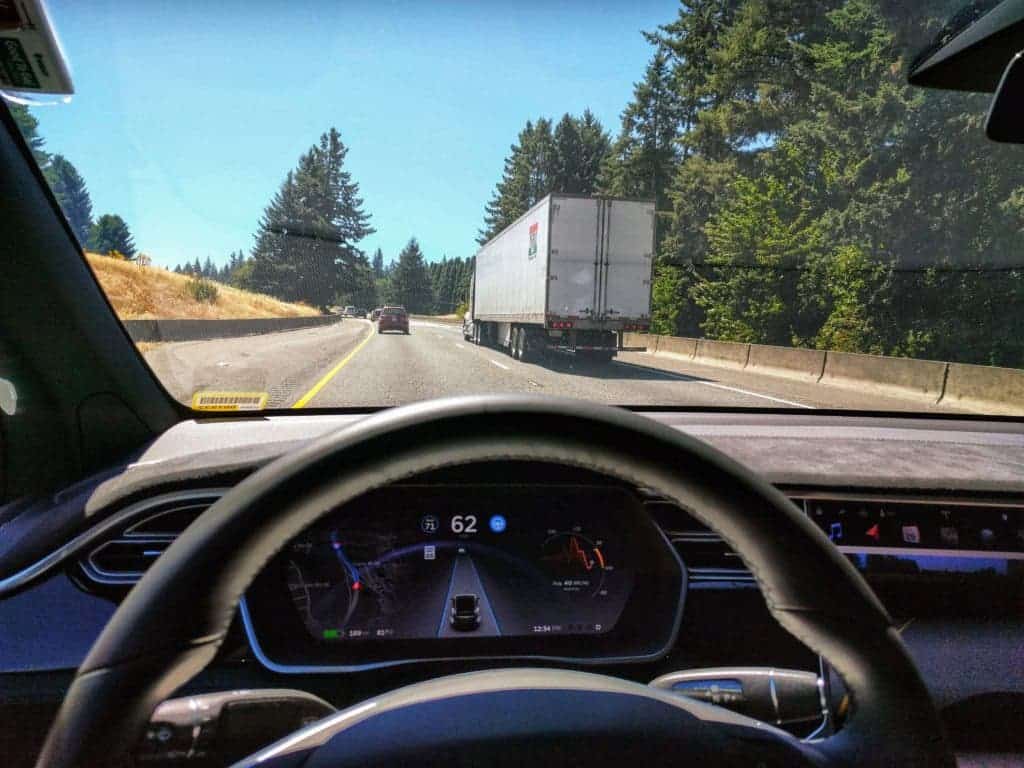
Tesla electric vehicles have collectively driven more than one billion miles on Autopilot. That’s 10% of the total mileage driven by all Tesla vehicles across the globe to date, including vehicles sold before Autopilot was even introduced.
As of today Tesla owners have driven 1 billion (!) miles with Autopilot engaged pic.twitter.com/16jMYrAZ7u
— Tesla (@Tesla) November 28, 2018
Autopilot was first rolled out in 2015, and ever since Tesla has introduced both hardware and software updates that improve autonomous driving. Last month, Tesla introduced new features in Software Version 9, including Navigate on Autopilot, which brings the company’s cars a step closer to becoming fully autonomous on the road.
“[Navigate on Autopilot] is one of the first major steps toward full self-driving. You can enter in an address, and from highway on-ramp to highway off-ramp, the car will change lanes. It will go from one highway to the next automatically and take off-ramp automatically. It’s pretty wild. It’ll overtake a slow car. It’s basically integrating navigation with the Autopilot capability,” Musk recently said during his recent appearance at the Recode Decode podcast. “I think we’ll get to full self-driving next year. As a generalized solution, I think. Like we’re on track to do that next year. So I don’t know. I don’t think anyone else is on track to do it next year.”
As it stands today, Autopilot is not fully ready for all types of roads. However, Tesla seems compelled to make all its cars fully autonomous. According to Andrej Karpathy, Tesla’s AI Director, the company already has large neural networks that are capable of safely navigating Teslas through different types of roads and traffic. However, these updates can’t be rolled out momentarily due to hardware constraints. For Autopilot to evolve into a truly autonomous feature, Tesla cars will have to be fitted with more computing power in the future. Upgrade to Hardware 3, which involves swapping the Autopilot computer, is free for all customers who purchased the Full Self-Driving suite.
“This upgrade allows us to not just run the current neural networks faster. But more importantly, it will allow us to deploy much larger, computationally more expensive networks to the fleet. As you make networks bigger by adding more neurons, the accuracy of all their predictions increases with the added capacity. So in other words, we are currently at a place where we’ve trained large neural networks that work very well, but we are not able to deploy them to the fleet due to computational constraints,” Karpathy said during the third quarter earnings call.
You can summon your Tesla from your phone. Only short distances today, but in a few years summon will work from across the continent. https://t.co/Xcj67ajZ8H
— Elon Musk (@elonmusk) November 29, 2018
The Silicon Valley auto-maker is also rolling updates to its valet parking feature dubbed “Summon”. The feature works on all cars manufactured in the past two years and, in the future, it will drive the electric vehicle to your phone location — even across the continent. The advanced Summon also allows users to “follow you like a pet” as long as you hold down the Summon button on the Tesla app. The update should be ready in a couple of weeks as an over-the-air software upgrade.
“Also, you’ll be able to drive it from your phone remotely like a big RC [remote control] car if in line of sight,” added Musk.


